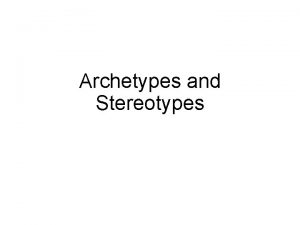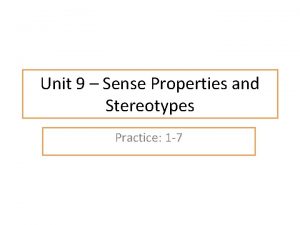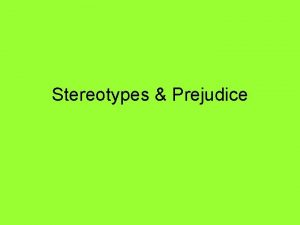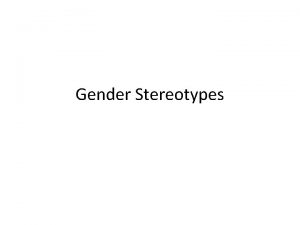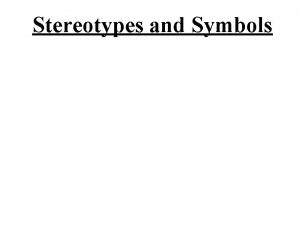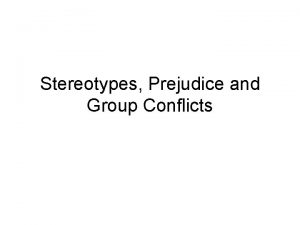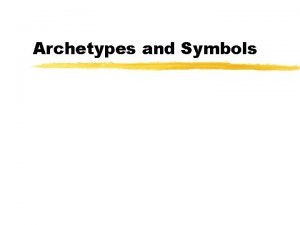Archetypes and Stereotypes How do you feel when










- Slides: 10

Archetypes and Stereotypes

How do you feel when you're hanging out with your best friend? Your funny cousin? Your grumpy teacher? • People affect our moods and feelings every day. • Characters, who are written to take on a life of their own, affect the mood of other characters in the story. • Authors often model characters after people, not necessarily people who have lived or are living; authors combine characteristics that we know to be true in human nature. • We recognize certain personality types in the people in our lives and in the characters in our literature.

We all know someone who is: • a clown • a hard worker • a bossy tyrant • a leader These people embody certain characteristics. Can you think of some? ?

What have you been labeled as? How do people decide upon these labels? Do the labels represent the individuals fully?

Archetypes are mental fingerprints revealing the details of a person’s personality The archetype tells the reader about the most basic instincts of the hero: how he thinks, how he feels, what drives him and why he chooses both his goals and his methods.

Stereotypes and Archetypes • Stereotypes are flat • Based only on surface characteristics

Archetypes • Archetypes are rich • Archetypes are a skeleton on which the author builds the flesh and soul of the character. • Shakespeare used the blueprint of the lover when he created Romeo, but he enriched the character with unique characteristics, such as his loyalty to Mercutio. Characters have many layers, but the archetype is often the root of their actions in a story.

Looking for an example?


Remember. . . • What the character does is not the defining element. The defining element is WHY the character does what he does. • “Any archetype can do anything – the question will always be why. ” • Archetypes are not stereotypes; they are not cookie cutters. They can be considered a framework, or even better, a lump of clay of a particular color and consistency.
